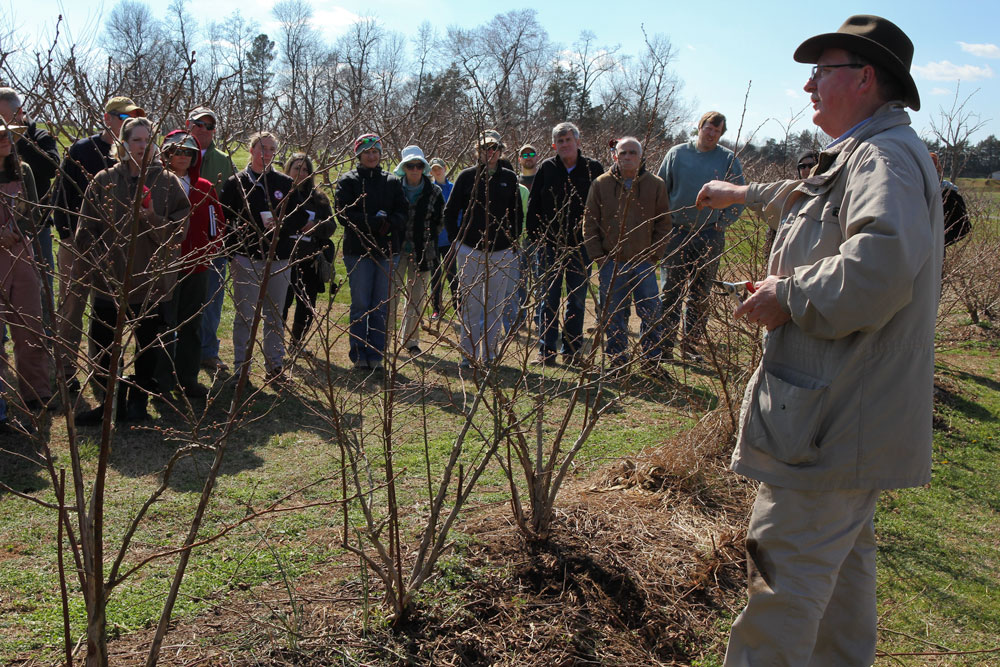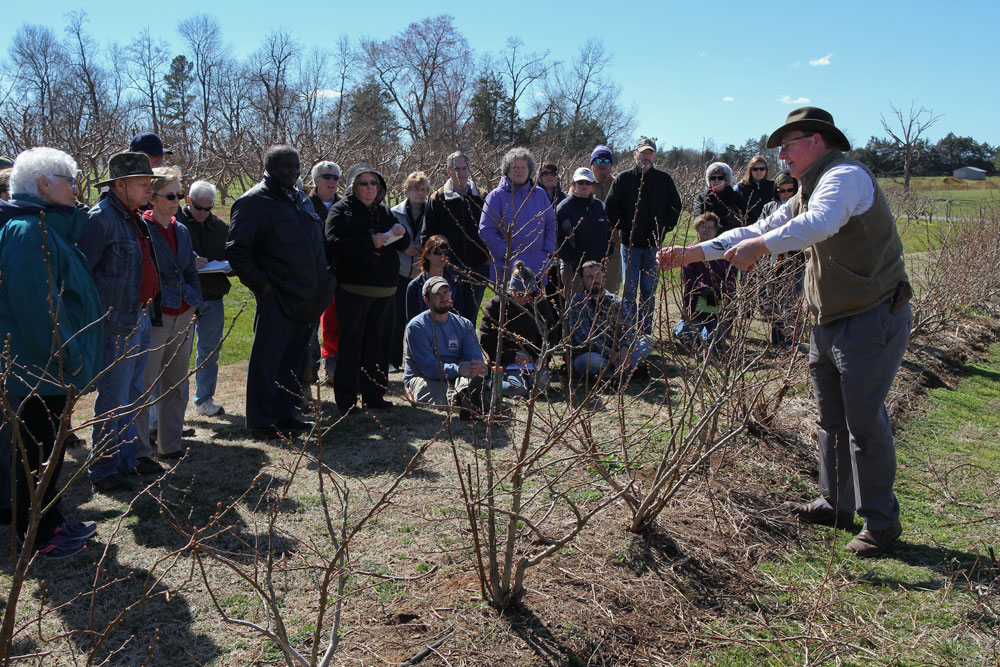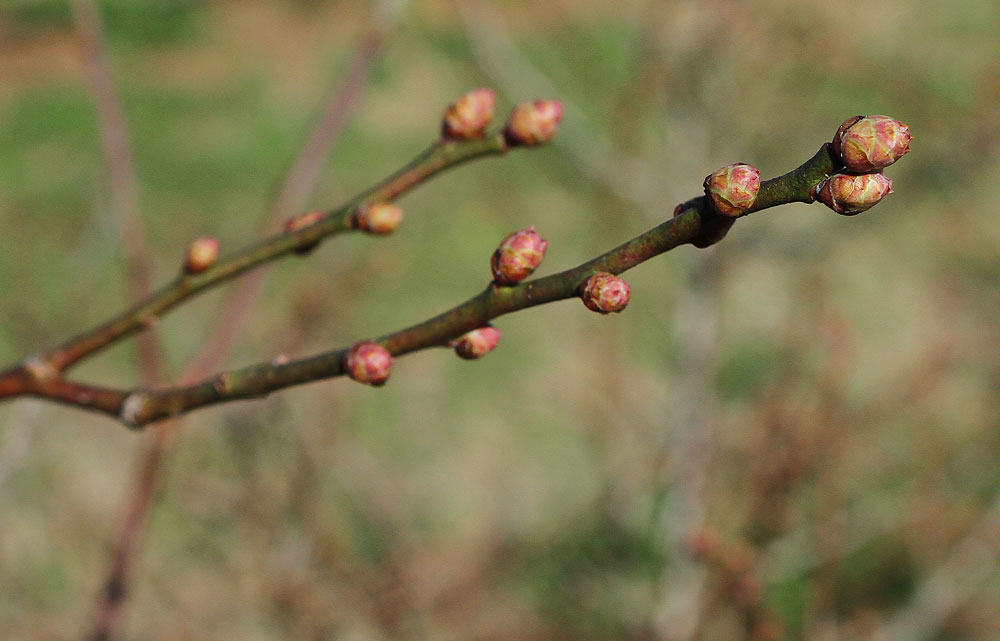Blueberry Pruning & Production Resources
go.ncsu.edu/readext?399888
en Español / em Português
El inglés es el idioma de control de esta página. En la medida en que haya algún conflicto entre la traducción al inglés y la traducción, el inglés prevalece.
Al hacer clic en el enlace de traducción se activa un servicio de traducción gratuito para convertir la página al español. Al igual que con cualquier traducción por Internet, la conversión no es sensible al contexto y puede que no traduzca el texto en su significado original. NC State Extension no garantiza la exactitud del texto traducido. Por favor, tenga en cuenta que algunas aplicaciones y/o servicios pueden no funcionar como se espera cuando se traducen.
Português
Inglês é o idioma de controle desta página. Na medida que haja algum conflito entre o texto original em Inglês e a tradução, o Inglês prevalece.
Ao clicar no link de tradução, um serviço gratuito de tradução será ativado para converter a página para o Português. Como em qualquer tradução pela internet, a conversão não é sensivel ao contexto e pode não ocorrer a tradução para o significado orginal. O serviço de Extensão da Carolina do Norte (NC State Extension) não garante a exatidão do texto traduzido. Por favor, observe que algumas funções ou serviços podem não funcionar como esperado após a tradução.
English
English is the controlling language of this page. To the extent there is any conflict between the English text and the translation, English controls.
Clicking on the translation link activates a free translation service to convert the page to Spanish. As with any Internet translation, the conversion is not context-sensitive and may not translate the text to its original meaning. NC State Extension does not guarantee the accuracy of the translated text. Please note that some applications and/or services may not function as expected when translated.
Collapse ▲
Farmers and gardeners learn proper blueberry pruning techniques at Howard’s Farm outside Pittsboro. Photo by Debbie Roos.
The Chatham County Center of North Carolina Cooperative Extension conducted blueberry pruning demonstrations in February 2016-2017. The demonstrations were held at Howard’s Farm a few miles west of Pittsboro on Hwy 64. The Howards grow peaches, apples, blueberries, and vegetables and sell them at their on-farm stand, called Mema’s Fruit Shack. Visit their facebook page for more information.
About 350 farmers and gardeners from 22 NC counties attended the demonstrations in 2016-2017. NCSU Blueberry Specialist Bill Cline talked about the importance of annual pruning to promote plant health and ensure large, high quality berries for many years to come. Pruning is done during the dormant season, usually between December-early March in the piedmont. Many people are reluctant to prune because it removes some of the flower buds and reduces berry production for the year, but if pruning is neglected berries get increasingly smaller and bush health declines. Consider pruning an investment in the long-term success of your plants!
Bill has put together some excellent guides full of helpful illustrations showing how to prune – these are linked at the bottom of this page, along with some other resources I think are useful. Make sure to check them out!

NCSU Blueberry Specialist Bill Cline prunes four year old rabbiteye blueberry plants at Howard’s farm. Photo by Debbie Roos.

NCSU Specialist Bill Cline talked about the importance of annual pruning for blueberries, starting with planting. Many people have a difficult time removing flower buds because they don’t want to lose berries but pruning ensures plant health and good yields of quality berries for years to come. Photo by Debbie Roos.

Flower buds are formed in late summer and early fall. If fully pollinated, each flower bud can produce 3-7 berries. Photo by Debbie Roos.

From left to right: Dwayne Howard, NCSU Blueberry Specialist Bill Cline, and Harold Howard. Dwayne manages the blueberries and his dad Harold manages the peach and apple trees. Photo by Debbie Roos.
Pruning Blueberries:
Blueberry Production and Pruning in North Carolina – North Carolina State University
Pruning Blueberries – North Carolina State University
General Blueberry Production:
Notes on Growing Blueberries – North Carolina State University
The NC Blueberry Journal (blog) – North Carolina State University
Blueberry Information Portal – North Carolina State University
Blueberry Pollinators – North Carolina State University
Organic Blueberry Production – ATTRA (fee for publication)
Blueberry Pest Management:
Spotted Wing Drosophila – North Carolina State University
Blueberry Pest Management: A Seasonal Overview – North Carolina State University
Blueberry Insect Pests – North Carolina State University
Blueberry Disease Fact Sheets – North Carolina State University
Cranberry Fruitworm in Blueberry – Growing Small Farms
Yellow-necked Caterpillars in Blueberry – Growing Small Farms
General Fruit Production:
Small Fruit Resources – Growing Small Farms
Tree Fruit Resources – Growing Small Farms
Freeze Damage to Local Fruit Crops


